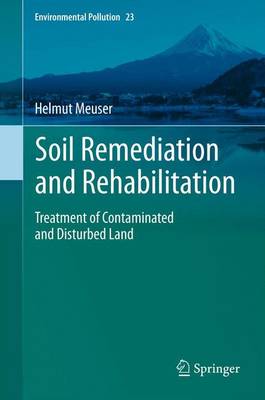Environmental Pollution
2 primary works
Book 18
With more than 50% of the world’s population already living in towns and cities, migration from rural areas continuing at an alarming rate in developing countries and suburbanisation using more and more land in developed countries, the urban environment has become supremely important with regard to human health and wellbeing. For centuries, urbanisation has caused relatively low level soil conta- nation mainly by various wastes. However, from the time of the Industrial Revolution onwards, both the scale of urban development and the degree of soil contamination rapidly increased and involved an ever widening spectrum of c- taminants. With constraints on the supply of land for new urban development in many countries, it is becoming increasingly necessary to re-use previously dev- oped (brownfield) sites and to deal with their accompanying suites of contaminants. It is therefore essential to fully understand the diversity and properties of urban soils, to assess the possible risks from the contaminants they contain and devise ways of cleaning up sites and/or minimizing hazards. The author, Helmut Meuser, is Professor of Soil Protection and Soil Clean-up at the University of Applied Sciences, Osnabrück and is one of Europe’s foremost experts on contamination from technogenic materials in urban soils. He has many years’ experience of research in Berlin, Essen, Osnabrück, other regions of Germany, and several other countries.
Book 23
This book provides a comprehensive overview of remediation and rehabilitation techniques and strategies for contaminated and anthropogenically disturbed land. Rehabilitation approaches in the urban environment, such as brownfield redevelopment and urban mining, are discussed. In relation to contaminated land, techniques for soil containment and decontamination of soil, soil vapour and groundwater are comprehensively and systematically presented. Complicated treatment techniques are schematically depicted and can be readily understood. Agricultural, silvicultural and environmentally sustainable rehabilitation strategies for reclaiming disturbed land/terrain in former mining or natural-resource extraction areas, such as open-cast mines, quarries, harvested peatlands, and subsided mining terrain (sinkholes), are introduced. This book will be a useful tool for students, researchers, private consultants and public authorities engaged in the treatment of contaminated or disturbed land.

